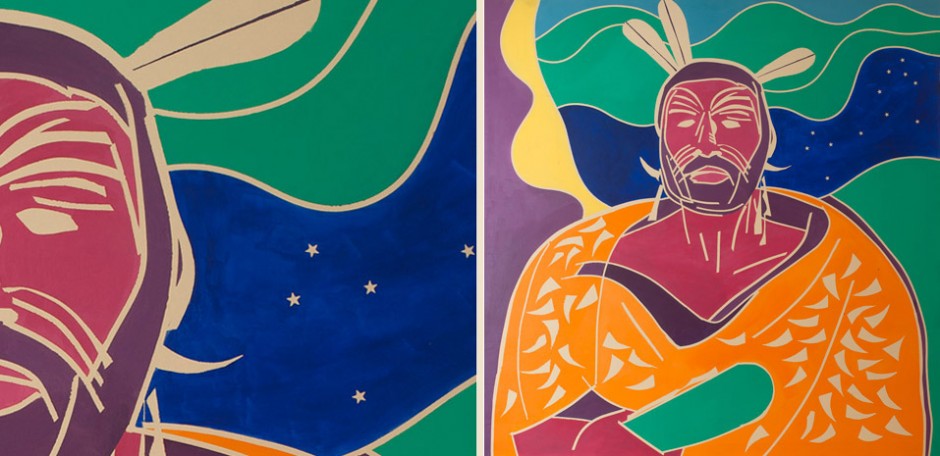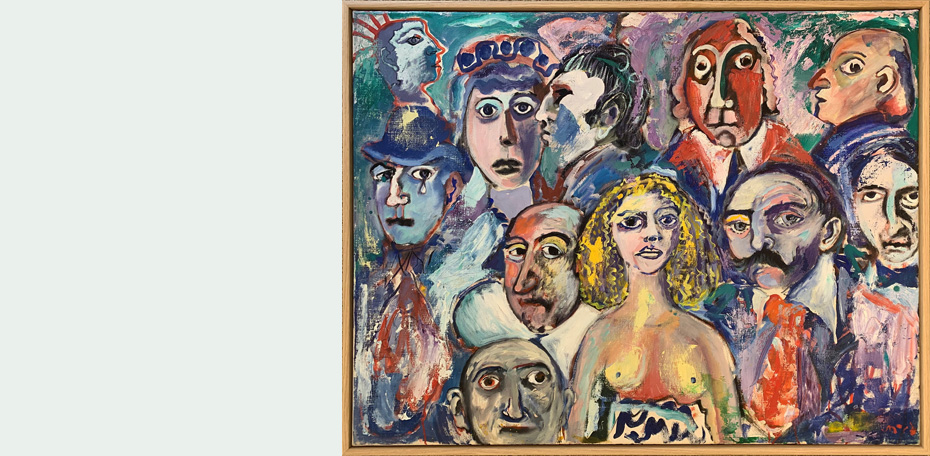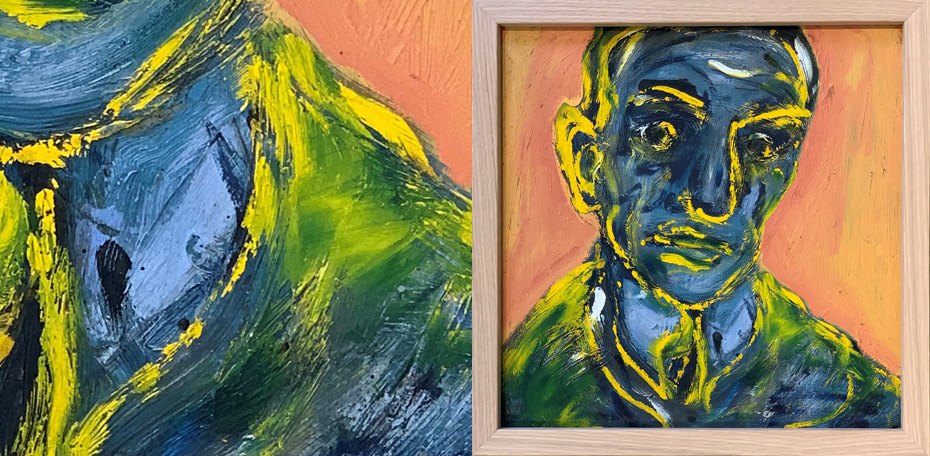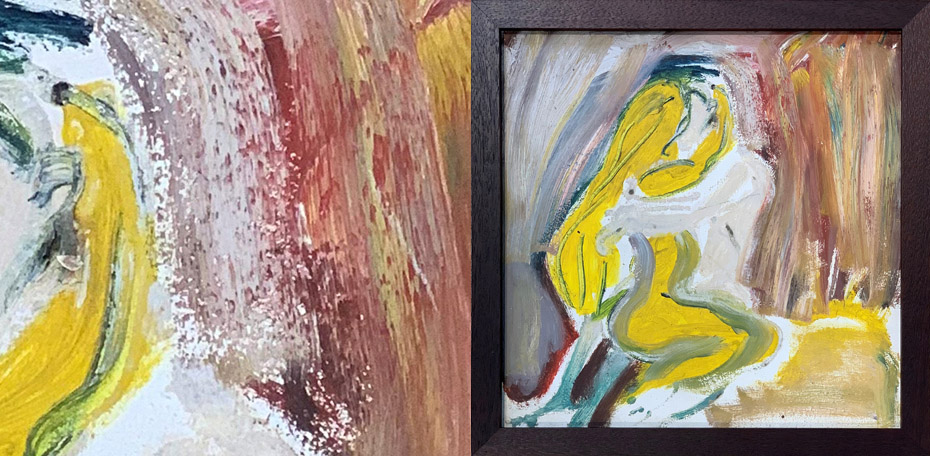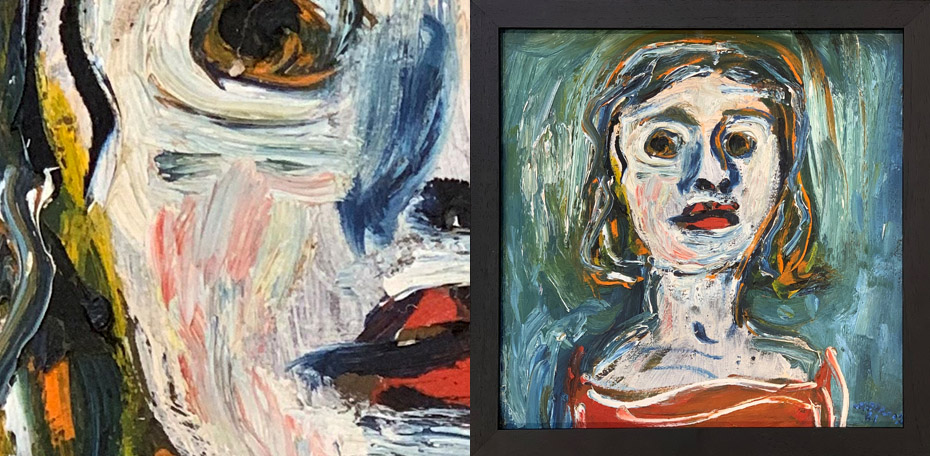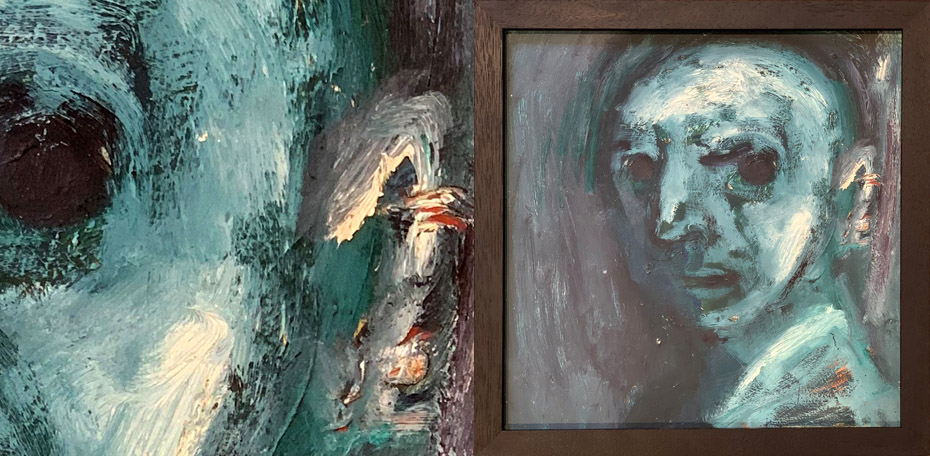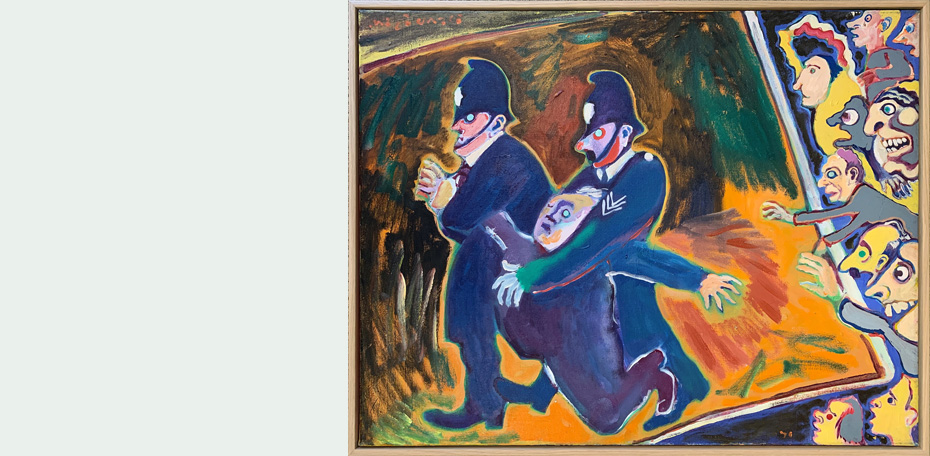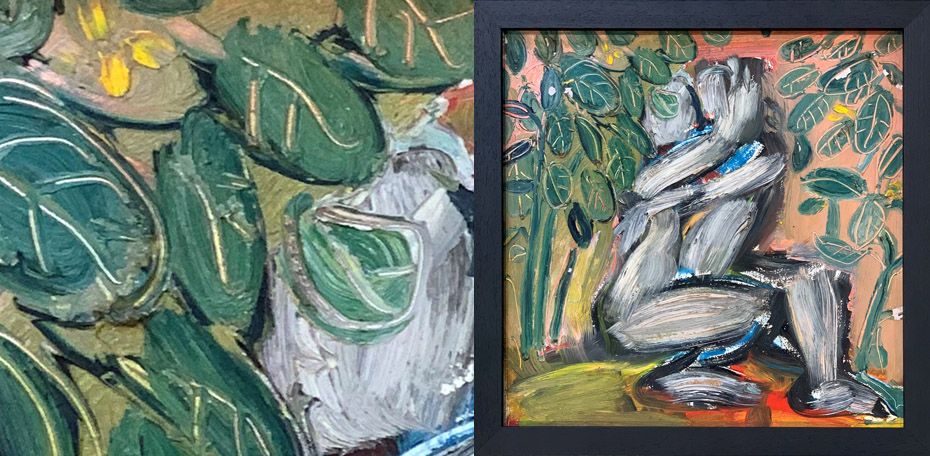The three 5’ 4” square Maori Chiefs pictured above are from a series of seven painting by Macdonald in the early seventies. After becoming ill from painting in his bedsit in London, he stopped painting in oils. When his good friend, Don Peebles, visited soon after, he suggested Macdonald try painting in a wonderful new American medium called acrylic. Deciding to give it a try, Macdonald took stretchers left to him by another friend, John Drawbridge, and assembled seven large canvases of un-primed cotton duck. Inspired by the Maori portraits of Bohemian artist Gottfried Lindauer, Macdonald decided to paint a number of the chiefs using the hard edge technique that had become popular around the time.
The paintings were first exhibited in New Zealand House, London in 1972 to coincide with the unveiling (by the Queen Mother) of a huge pouihi or totem pole carved by New Zealand artist and opera singer, Inia Te Wiata. After a year on display, the works were rolled up and stored. It was not until over 30 years later that one of the paintings was sent to New Zealand to be sold through a Wellington gallery owned by Cameron Drawbridge (John Drawbridge’s son). The paintings were sent to Fe29 in late 2018 for inclusion in the exhibition Three Friends, Three Paths, featuring over 100 works by Macdonald, John Drawbridge and Don Peebles, and accompanied by sculpture by Drawbridge’s widow, Tanya Ashken. These friends had all lived together in a house in London in the early sixties and remained friends for life. The remaining works are owned by members of the Macdonald family.
Macdonald settled in Wales, the home of his wife Annie, and the remaining oils and acrylics shown above have Welsh themes.
See also Robert Macdonald’s, Watercolours, Etchings and Linocuts & Woodcuts
Robert Macdonald Bio – Born in 1935 in Spilsby, Lincolnshire, the bombing of Macdonald’s home during the war led to his family emigrating to New Zealand in 1945, settling in Ruawai (Kaipara Harbour), a mixed community of Maori and Pakeha.
With art studies out of reach, Macdonald trained as a reporter, before undertaking a period of service with the NZ army. He worked as a journalist at the New Zealand Herald until 1958, when he took a boat to Sydney, and then an Italian immigrant ship to Naples. Making his way to London, he visited the art schools, being accepted at the Central where he met John Drawbridge. Macdonald had early success in 1960 when one of his etchings was selected for a prestigious exhibition of 25 printmakers.
During the 1960’s, as finances dictated, he worked in Fleet St as a Commonwealth Correspondent. Continuing to paint in his spare time, six of his large Maori portraits were exhibited in New Zealand House, London in 1972. As Chief Diplomatic Correspondent In the 1970’s, he travelled widely with Britain’s Foreign Secretaries. He gave up this work in 1976 for postgraduate studies at the Royal College of Art. After three years there, he returned to the Central to take an advanced printmaking course.
With strong links to New Zealand, and empathy for the losses of the Maori, he accepted an invitation from Robert Mahuta (nephew of the Maori Queen) to take part in the Hikoi in 1984, helping to present Treaty demands to Parliament, and documenting their struggles in his book The Fifth Wind, which was illustrated with his own linocuts.
He has since become a well-known artist in Wales and has been chair of the Welsh Group (the senior association of professional artists in Wales), is currently president of the Royal Watercolour Society of Wales and a director of the Swansea Printmaking Workshop. He is author of the much-praised book The Fifth Wind (1989).
His prints have been exhibited widely in the UK and internationally in Brussels, Holland, USA, Germany, Pakistan and New Zealand, and are held in the Victoria & Albert Museum, London among other public collections. His Welsh watercolours have won many awards. In 2014 he became the first elected president of the Royal Watercolour Society of Wales and is a director of the Swansea Printmaking Workshop.


